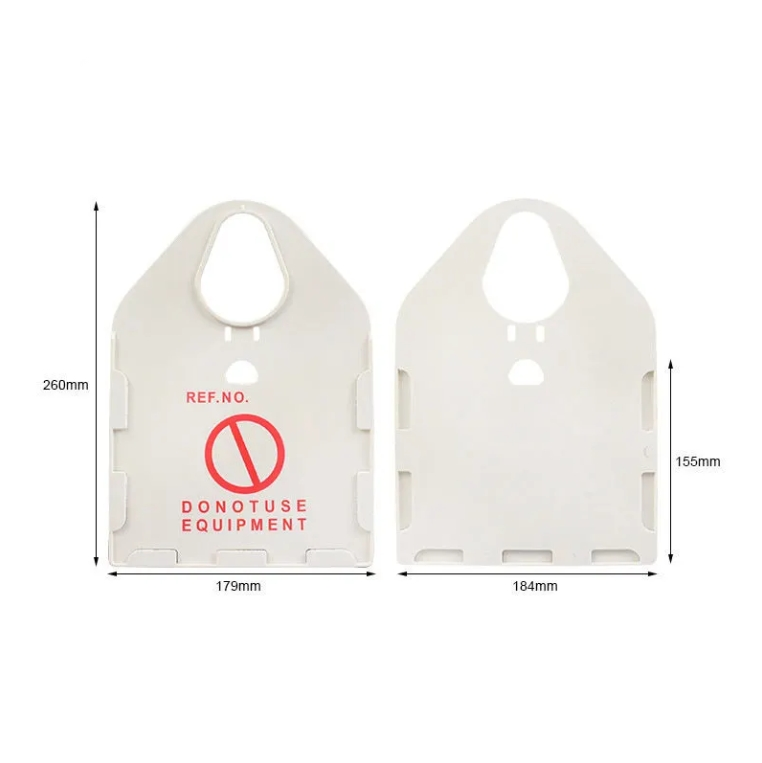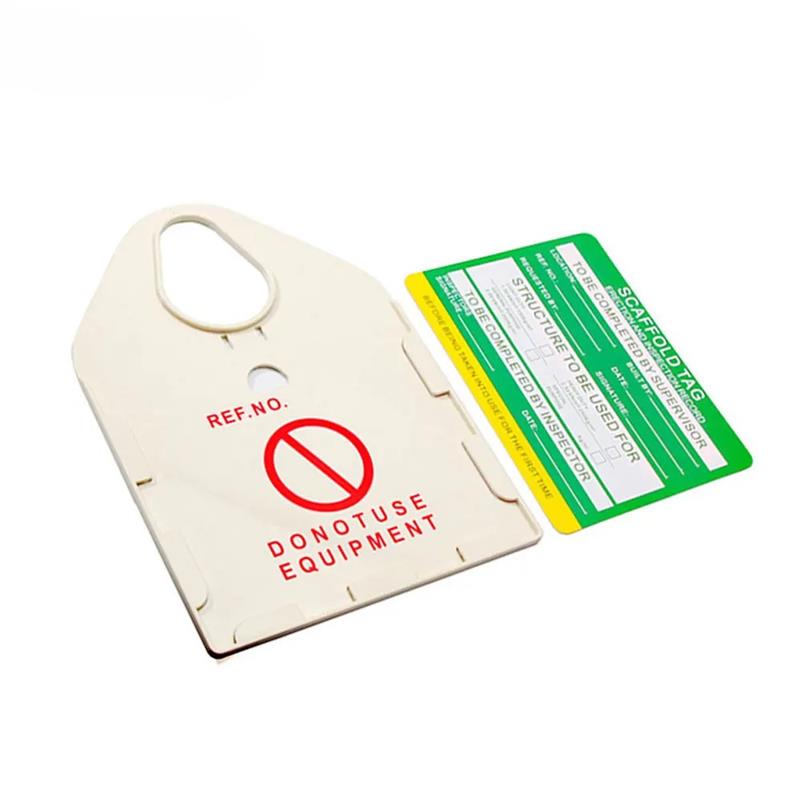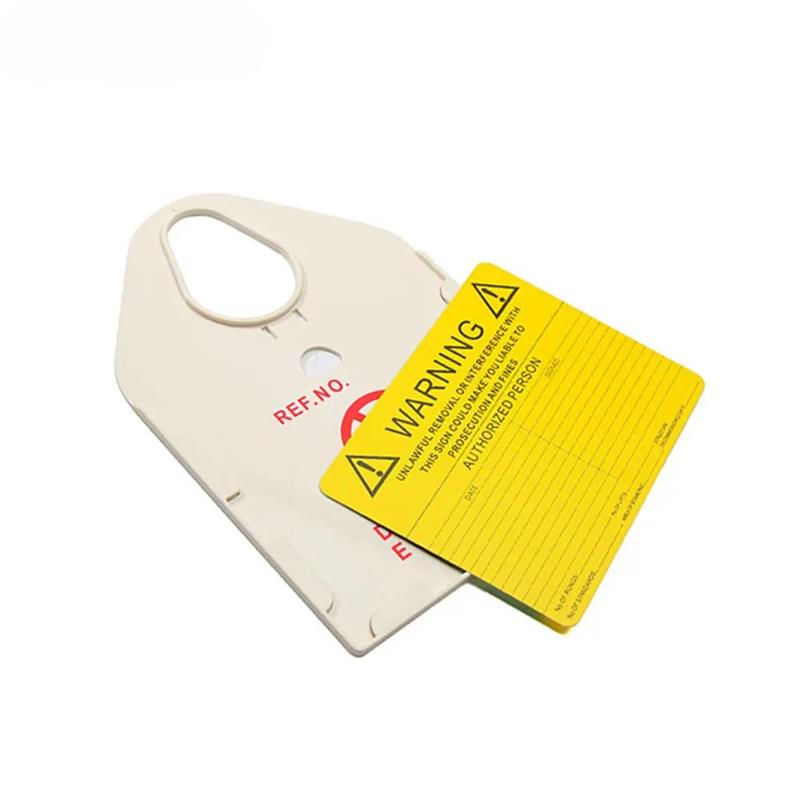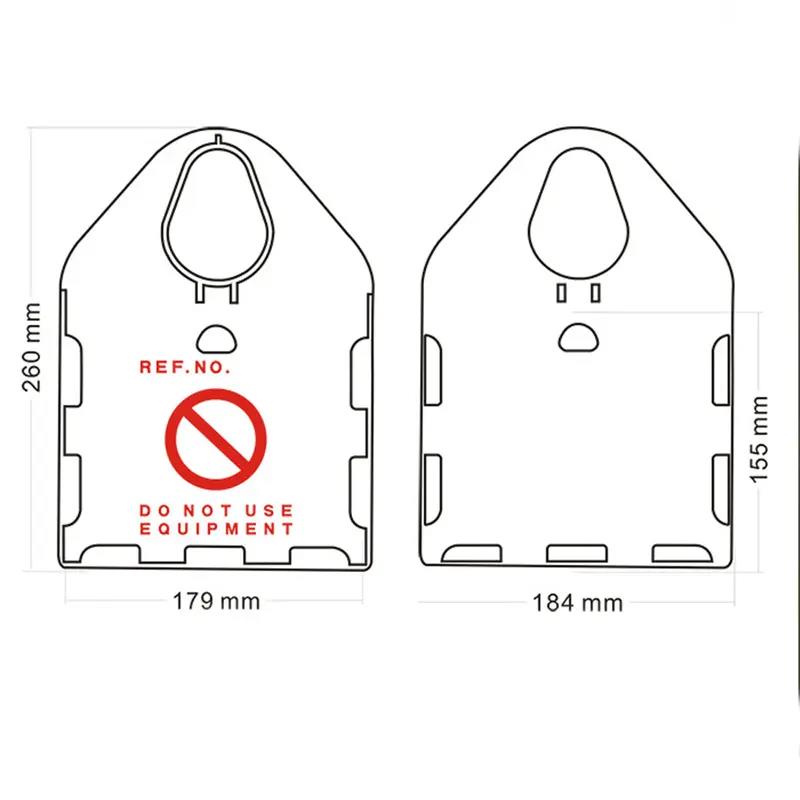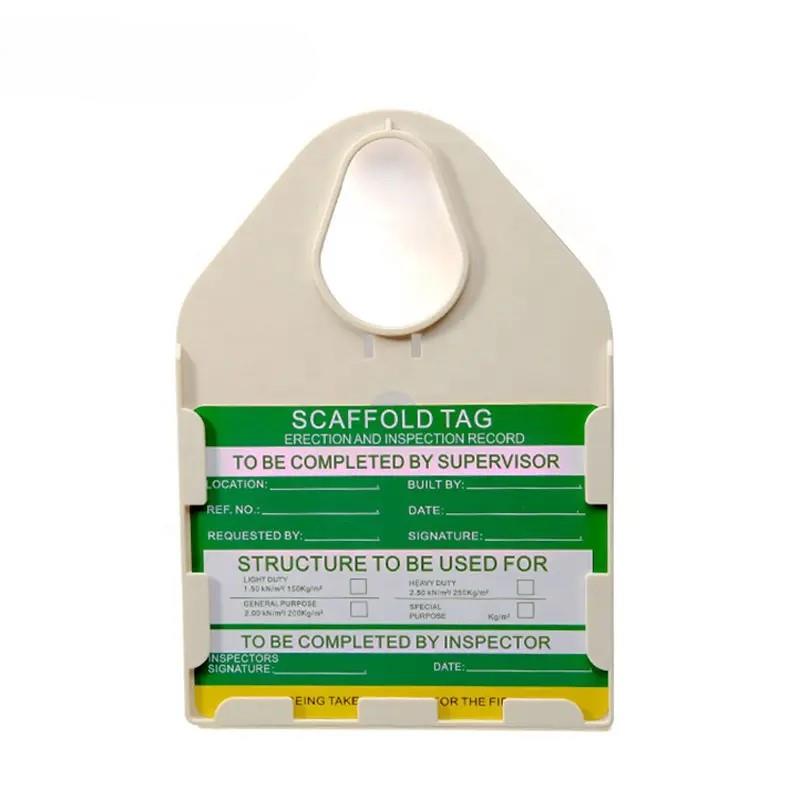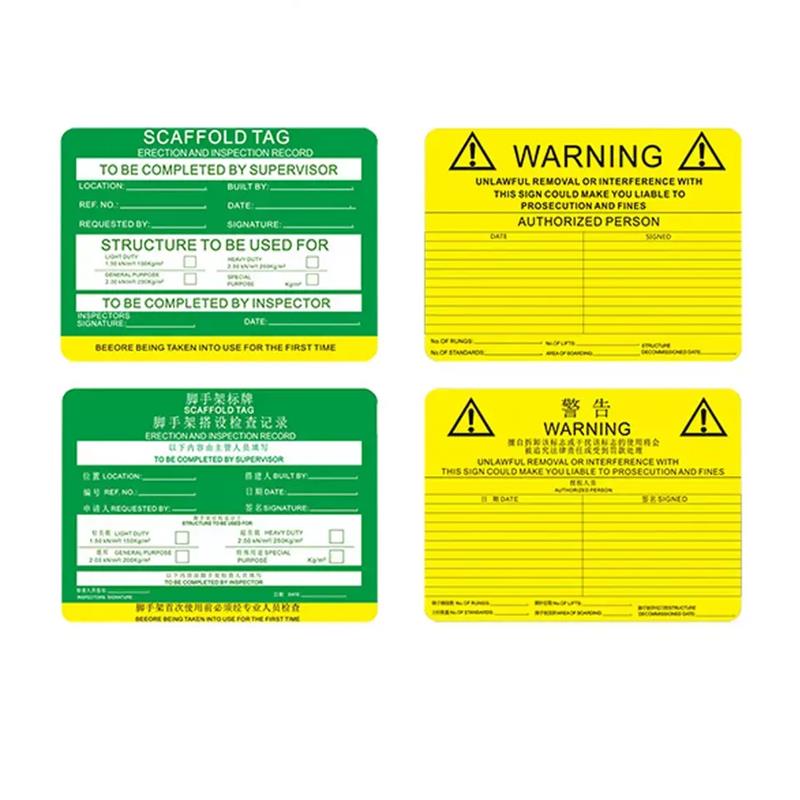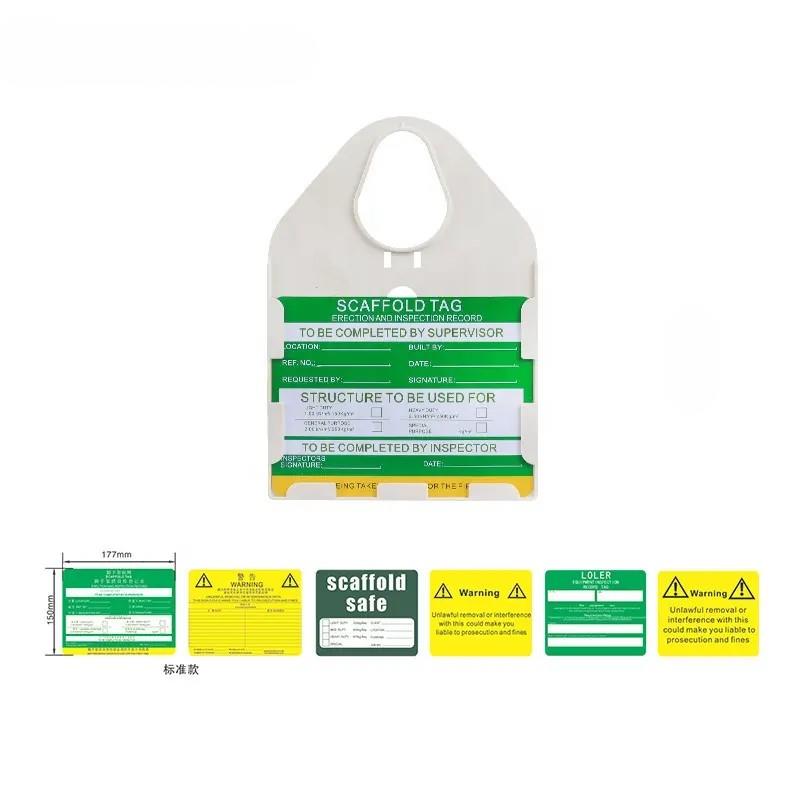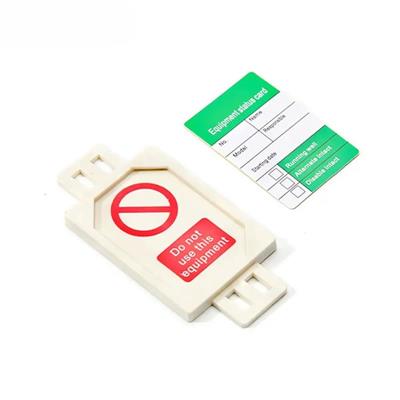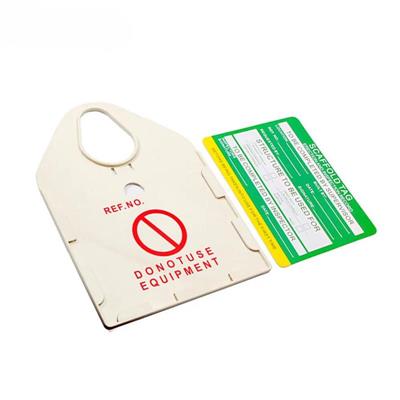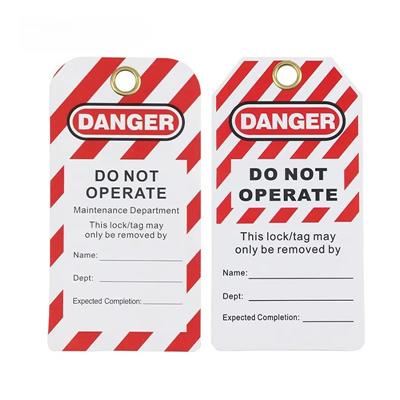Product Description
1. Color can be customized
2. Resistant to chemical, oil, and water
3. The stand is made of high-strength abs
4. Labels can be attached to equipment or tied to wires
5. Green card, the scaffolding is safe and can be used normally
6. Yellow card, the scaffolding is damaged, under maintenance
7. Red card (without card), the scaffolding is prohibited from being used
8. The writing can be customized, such as company information, logo, warning, language, etc
The tag can be attached to the equipment by adhesive and also can be tied to the wire by cable.Safety tag is used to do the overall control of equipment to protect personal from injury,equipment from damage.Provide system,procedural and legal compliance for scaffolds on work sites.
The tags are available in three durable written-on materials,providing highly visual and eye catching information.
Use the label together with a safety padlock to boldly warn that the equipment is locked out and cannot who performs it.The worker using the equipment can be identified immediately to protect his safety when used in factories.Provides system,procedural and legal compliance for scaffolds on work sites.
"Do not use equipment" printed on the front.Remember scaffolding must be inspected by a competent person.
The tags are available in three durable write-on materials.providing high visual and eye-catching information.
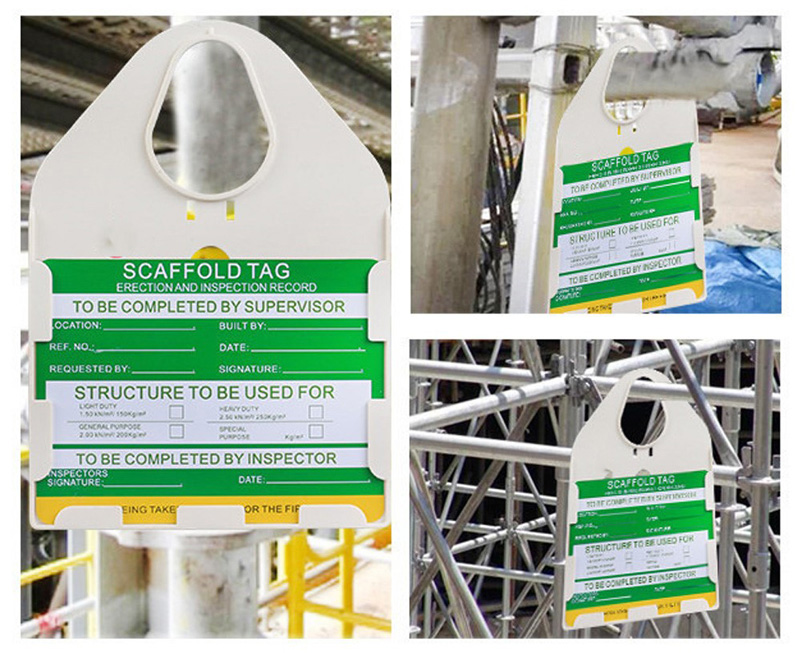
Scaffold Tags M-J31/32/33/34 specification
|
Model
|
Specification
|
|
M-J31
|
holder: 38.3X81mm label: 32x48mm
|
|
M-J32
|
holder: 56x212mm label: 52x183mm
|
|
M-J33
|
holder: 92x310mm label: 85x210mm
|
|
M-J34
|
holder: 185x260mm label: 135x177mm
|
Danger tags, also known as warning tags or caution tags, are visual indicators used to highlight hazardous or dangerous conditions in various settings. These tags are typically made of durable materials, such as cardstock or plastic, and are designed to catch attention and communicate potential risks to individuals in the area. The purpose of danger tags is to alert people to potential dangers and encourage them to take necessary precautions or avoid certain areas. These tags often feature bold, easily recognizable symbols or text that convey the specific hazard or risk involved.
Danger tags are commonly used in workplaces, construction sites, industrial facilities, and other environments where there may be a higher risk of accidents, injuries, or exposure to hazardous substances. They can be attached to equipment, machinery, electrical panels, pipes, or any other potential hazard. Some common examples of danger tags include:
1. Electrical Hazard Tags: These tags warn individuals about the presence of live electrical equipment, high voltage areas, or other electrical dangers.
2. Chemical Hazard Tags: These tags indicate the presence of hazardous chemicals or substances that may cause harm if not handled properly. They may include information about the specific chemical, its potential health effects, and necessary precautions.
3. Confined Space Tags: These tags are used to identify confined spaces, such as tanks, tunnels, or manholes, that pose risks due to limited access, poor ventilation, or potential for engulfment.
4. Fall Hazard Tags: These tags highlight areas or equipment that present a risk of falls, such as open edges, unprotected ledges, or elevated platforms.
5. Machinery Hazard Tags: These tags warn individuals about the dangers associated with specific machinery or equipment, such as moving parts, pinch points, or rotating blades. The use of danger tags helps to increase awareness and promote a culture of safety in various settings. They serve as a visual reminder for individuals to exercise caution, follow safety protocols, and take appropriate measures to prevent accidents or injuries.
|
Place of Origin
|
Zhejiang,China
|
|
Brand Name
|
QVAND
|
|
Model Number
|
M-J34
|
|
Material
|
Durable ABS Plastic
|
|
Size
|
260*185mm
|
|
Color
|
White
|
|
Service
|
OEM Support
|

